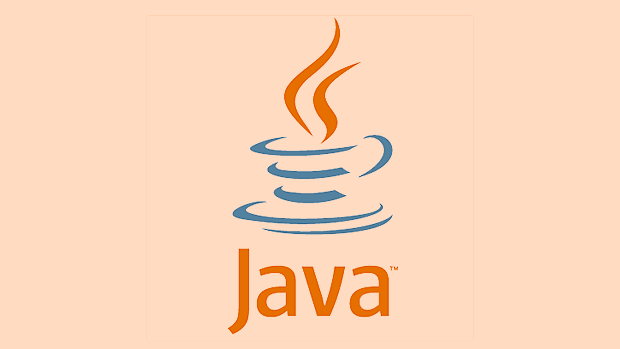String is immutable, StringBuilder is mutable and non-thread-safe, StringBuffer is mutable and thread-safe. 1. Once the content of String is created cannot be modified, it is suitable for a small amount of splicing; 2. StringBuilder is suitable for frequent splicing of single threads and has high performance; 3. StringBuffer is suitable for multi-threaded shared scenarios, but has a slightly lower performance; 4. Reasonably set the initial capacity and avoid using String splicing in loops can improve performance.

The three classes String, StringBuilder and StringBuffer in Java are often confusing, especially when you are just starting out. They are all related to string operations, but the usage and applicable scenarios are quite different. Simply put: String is immutable, StringBuilder is mutable and non-thread-safe, and StringBuffer is mutable and thread-safe . Choosing the right one can improve performance, but choosing the wrong one may cause problems.

Why is String immutable?
String cannot modify content once created. For example, you wrote:
String s = "hello"; s = " world";
This is actually a new object was created, and the original "hello" was not modified. This design is mainly for security and efficiency , such as having hash values ??can be cached, being a HashMap key is more stable, and it can also avoid synchronization problems under multi-threading.

However, this also brings performance problems, especially when strings are frequently spliced, a large number of intermediate garbage objects will be generated. So if you just splice a small amount, it is okay, but if you are processing a large amount of data in a loop, it is not recommended to use String.
StringBuilder: fast speed, suitable for single threading
If you need to frequently splice strings in a single threaded environment, you prefer StringBuilder . It does not create a new object every time it is spliced, but maintains an array of characters internally and expands the capacity dynamically.

For example:
StringBuilder sb = new StringBuilder();
for (int i = 0; i < 1000; i ) {
sb.append(i);
}
String result = sb.toString();This process will not generate a large number of temporary objects, and it is much more efficient than using String.
Its methods are basically common operations such as append, insert, delete, and reverse, which are also very intuitive to use.
StringBuffer: thread safe, but slightly slow
StringBuffer and StringBuilder are almost exactly the same. The only difference is: The StringBuffer method has the synchronized keyword , which means it is thread-safe.
When to use it? StringBuffer is only needed to consider when sharing string buffers in a multithreaded environment . Otherwise, StringBuilder is generally used because synchronized will bring additional overhead.
For example, if the following code is called at the same time by multiple threads, it is recommended to use StringBuffer:
public class SharedBuffer {
private StringBuffer buffer = new StringBuffer();
public void add(String text) {
buffer.append(text);
}
}But if you are sure it is single threaded or not shared, there is no need to spend this extra cost.
Actual selection suggestions
- When more reads, fewer writes, and fewer splicing → Use String
- Frequent splicing, single thread → Use StringBuilder
- Frequent splicing, multi-thread sharing → Use StringBuffer
There are several other points to note:
- Reasonable initial capacity setting can reduce the number of expansions and improve performance
- Don't use String to splice in a loop to "save trouble"
- If it's just a simple string combination, there's no need to force StringBuilder
Basically that's it. The difference between these categories seems simple, but it has a significant impact in actual development, especially in areas with sensitive performance.
The above is the detailed content of Java String vs StringBuilder vs StringBuffer. For more information, please follow other related articles on the PHP Chinese website!

Hot AI Tools

Undress AI Tool
Undress images for free

Undresser.AI Undress
AI-powered app for creating realistic nude photos

AI Clothes Remover
Online AI tool for removing clothes from photos.

Clothoff.io
AI clothes remover

Video Face Swap
Swap faces in any video effortlessly with our completely free AI face swap tool!

Hot Article

Hot Tools

Notepad++7.3.1
Easy-to-use and free code editor

SublimeText3 Chinese version
Chinese version, very easy to use

Zend Studio 13.0.1
Powerful PHP integrated development environment

Dreamweaver CS6
Visual web development tools

SublimeText3 Mac version
God-level code editing software (SublimeText3)
 VSCode settings.json location
Aug 01, 2025 am 06:12 AM
VSCode settings.json location
Aug 01, 2025 am 06:12 AM
The settings.json file is located in the user-level or workspace-level path and is used to customize VSCode settings. 1. User-level path: Windows is C:\Users\\AppData\Roaming\Code\User\settings.json, macOS is /Users//Library/ApplicationSupport/Code/User/settings.json, Linux is /home//.config/Code/User/settings.json; 2. Workspace-level path: .vscode/settings in the project root directory
 How to handle transactions in Java with JDBC?
Aug 02, 2025 pm 12:29 PM
How to handle transactions in Java with JDBC?
Aug 02, 2025 pm 12:29 PM
To correctly handle JDBC transactions, you must first turn off the automatic commit mode, then perform multiple operations, and finally commit or rollback according to the results; 1. Call conn.setAutoCommit(false) to start the transaction; 2. Execute multiple SQL operations, such as INSERT and UPDATE; 3. Call conn.commit() if all operations are successful, and call conn.rollback() if an exception occurs to ensure data consistency; at the same time, try-with-resources should be used to manage resources, properly handle exceptions and close connections to avoid connection leakage; in addition, it is recommended to use connection pools and set save points to achieve partial rollback, and keep transactions as short as possible to improve performance.
 Mastering Dependency Injection in Java with Spring and Guice
Aug 01, 2025 am 05:53 AM
Mastering Dependency Injection in Java with Spring and Guice
Aug 01, 2025 am 05:53 AM
DependencyInjection(DI)isadesignpatternwhereobjectsreceivedependenciesexternally,promotingloosecouplingandeasiertestingthroughconstructor,setter,orfieldinjection.2.SpringFrameworkusesannotationslike@Component,@Service,and@AutowiredwithJava-basedconfi
 python itertools combinations example
Jul 31, 2025 am 09:53 AM
python itertools combinations example
Jul 31, 2025 am 09:53 AM
itertools.combinations is used to generate all non-repetitive combinations (order irrelevant) that selects a specified number of elements from the iterable object. Its usage includes: 1. Select 2 element combinations from the list, such as ('A','B'), ('A','C'), etc., to avoid repeated order; 2. Take 3 character combinations of strings, such as "abc" and "abd", which are suitable for subsequence generation; 3. Find the combinations where the sum of two numbers is equal to the target value, such as 1 5=6, simplify the double loop logic; the difference between combinations and arrangement lies in whether the order is important, combinations regard AB and BA as the same, while permutations are regarded as different;
 Troubleshooting Common Java `OutOfMemoryError` Scenarios
Jul 31, 2025 am 09:07 AM
Troubleshooting Common Java `OutOfMemoryError` Scenarios
Jul 31, 2025 am 09:07 AM
java.lang.OutOfMemoryError: Javaheapspace indicates insufficient heap memory, and needs to check the processing of large objects, memory leaks and heap settings, and locate and optimize the code through the heap dump analysis tool; 2. Metaspace errors are common in dynamic class generation or hot deployment due to excessive class metadata, and MaxMetaspaceSize should be restricted and class loading should be optimized; 3. Unabletocreatenewnativethread due to exhausting system thread resources, it is necessary to check the number of threads, use thread pools, and adjust the stack size; 4. GCoverheadlimitexceeded means that GC is frequent but has less recycling, and GC logs should be analyzed and optimized.
 python pytest fixture example
Jul 31, 2025 am 09:35 AM
python pytest fixture example
Jul 31, 2025 am 09:35 AM
fixture is a function used to provide preset environment or data for tests. 1. Use the @pytest.fixture decorator to define fixture; 2. Inject fixture in parameter form in the test function; 3. Execute setup before yield, and then teardown; 4. Control scope through scope parameters, such as function, module, etc.; 5. Place the shared fixture in conftest.py to achieve cross-file sharing, thereby improving the maintainability and reusability of tests.
 Understanding the Java Virtual Machine (JVM) Internals
Aug 01, 2025 am 06:31 AM
Understanding the Java Virtual Machine (JVM) Internals
Aug 01, 2025 am 06:31 AM
TheJVMenablesJava’s"writeonce,runanywhere"capabilitybyexecutingbytecodethroughfourmaincomponents:1.TheClassLoaderSubsystemloads,links,andinitializes.classfilesusingbootstrap,extension,andapplicationclassloaders,ensuringsecureandlazyclassloa
 How to work with Calendar in Java?
Aug 02, 2025 am 02:38 AM
How to work with Calendar in Java?
Aug 02, 2025 am 02:38 AM
Use classes in the java.time package to replace the old Date and Calendar classes; 2. Get the current date and time through LocalDate, LocalDateTime and LocalTime; 3. Create a specific date and time using the of() method; 4. Use the plus/minus method to immutably increase and decrease the time; 5. Use ZonedDateTime and ZoneId to process the time zone; 6. Format and parse date strings through DateTimeFormatter; 7. Use Instant to be compatible with the old date types when necessary; date processing in modern Java should give priority to using java.timeAPI, which provides clear, immutable and linear






